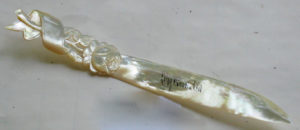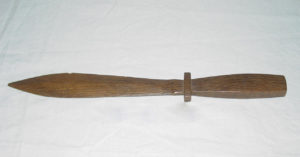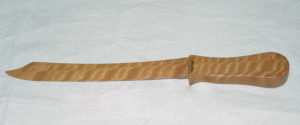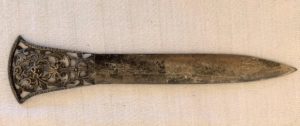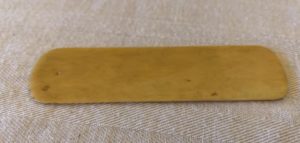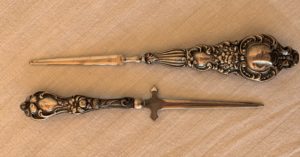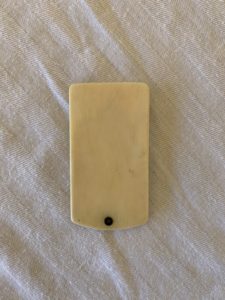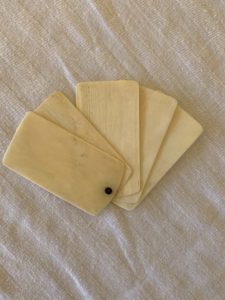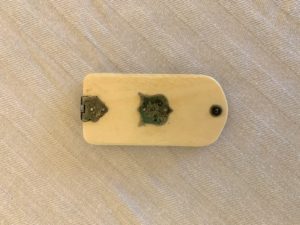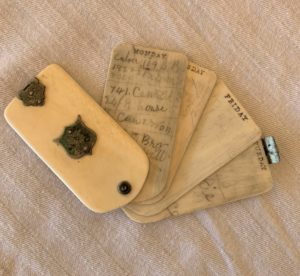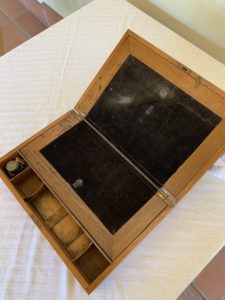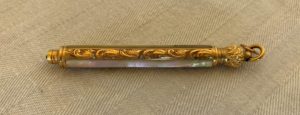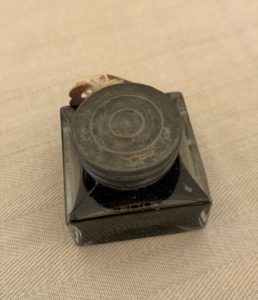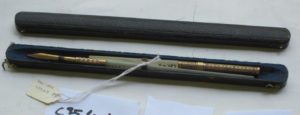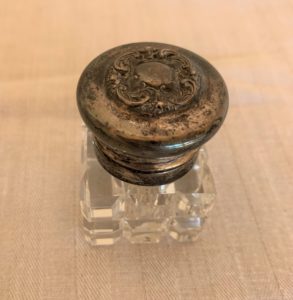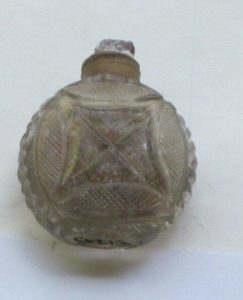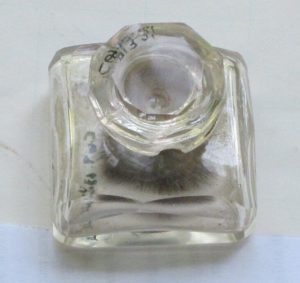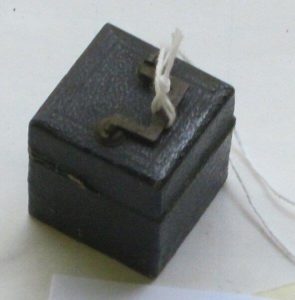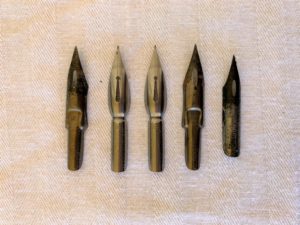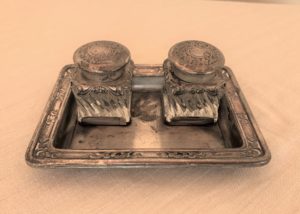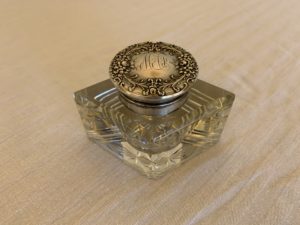Reading and Writing Essentials of the 19th and Early 20th Century
During the 19th and early 20th centuries, a variety of objects were used to complement the activities of reading and writing. These essentials were richly ornamented and beautifully made with creative craftsmanship and unique designs.
Please click on the images to view details of the artifacts
Included in this exhibit:
Paper Knives, often mistaken for letter openers, became popular in the beginning of the 19th century. Their sole purpose was to open the uncut pages of books. The blade has round edges and a rounded blunt tip to prevent any damage to the page. Common materials used to construct paper knives were bone, silver, wood, ivory, mother-of-pearl, and different types of stone and ceramic. Paper knives became less common in the mid-20th century due to changes in book production.
The Letter Opener evolved from the paper knife in the second half of the 19th century. The narrow and sharp shape enabled it to break off the seal without doing any damage to the envelope. Like paper knives, the handles had decorative designs.
Ivory pocket notebooks are portable notebooks made out of ivory leaves. They were used as daily calendars or to write notes in pencil. The contents would later be transferred to a permanent notebook and the pencil marks would be erased so the ivory plates could be reused.
The first Portable Lap Desk was invented by Thomas Jefferson in 1776 to occupy his time during his 200-mile coach ride to the Continental Congress in Philadelphia. The Portable Lap Desk is made with durable wood like mahogany or walnut and has built-in compartments for stationery and writing utensils.
The first Dip Pens became popular when metal nibs started being mass produced in 1822, replacing the quill. In the mid-19th century, Inkwells were embellished with elegant designs. Gold and silver inkstands were popular for those in high society, and other materials used for inkstands were porcelain, pewter and even lead. Portable inkwells were developed during the Civil War for soldiers to write in the battlefields. They were also useful for those who travelled. With the development of the fountain pen in the early 20th century, inkwells became less popular.

